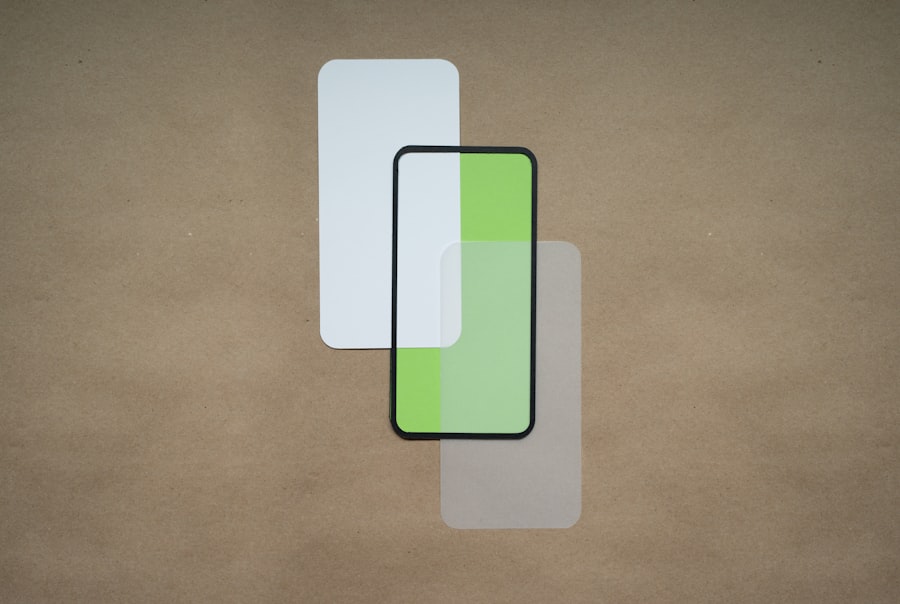Augmented Reality (AR) has emerged as a transformative technology in various sectors, and healthcare is no exception. By overlaying digital information onto the real world, AR enhances the way medical professionals interact with patients, visualize complex data, and perform procedures. The integration of AR into healthcare is not merely a trend; it represents a paradigm shift that has the potential to improve patient outcomes, streamline processes, and enhance the educational experiences of medical professionals.
As the technology continues to evolve, its applications are becoming increasingly sophisticated, offering innovative solutions to longstanding challenges in the medical field. The healthcare industry is characterized by its complexity and the need for precision. From surgical procedures to patient education, the stakes are high, and the margin for error is minimal.
AR applications are designed to bridge the gap between theoretical knowledge and practical application, providing healthcare professionals with tools that enhance their capabilities. By visualizing anatomical structures in real-time or simulating surgical scenarios, AR empowers practitioners to make informed decisions and perform with greater accuracy. This article delves into various applications of AR in healthcare, exploring how this technology is reshaping medical training, surgical planning, rehabilitation, telemedicine, patient engagement, and mental health.
Key Takeaways
- AR applications in healthcare are revolutionizing the way medical training, surgical planning, rehabilitation, telemedicine, patient education, and mental health and wellness are approached.
- AR applications are being used to enhance medical training and education by providing immersive and interactive learning experiences for medical students and professionals.
- AR applications are improving surgical planning and navigation by allowing surgeons to visualize and practice complex procedures in a virtual environment before performing them on patients.
- AR applications are transforming rehabilitation and physical therapy by providing personalized and interactive exercises to improve patient outcomes and engagement.
- AR applications are enabling telemedicine and remote consultations by allowing healthcare providers to interact with patients and diagnose conditions from a distance, improving access to care and reducing healthcare disparities.
AR Applications for Medical Training and Education
Medical training has traditionally relied on textbooks, lectures, and hands-on experience in clinical settings. However, these methods can sometimes fall short in providing a comprehensive understanding of complex anatomical structures and medical procedures. AR applications are revolutionizing medical education by offering immersive learning experiences that engage students in ways that traditional methods cannot.
For instance, platforms like HoloAnatomy allow students to visualize 3D models of human anatomy overlaid on their own bodies or on physical models. This interactive approach not only enhances retention but also fosters a deeper understanding of spatial relationships within the human body. Moreover, AR can simulate real-life scenarios that medical students may encounter in their careers.
For example, applications like Osso VR provide virtual surgical environments where students can practice procedures repeatedly without the risk of harming patients. These simulations can be tailored to individual learning needs, allowing students to focus on specific skills or techniques they wish to master. The ability to practice in a safe environment builds confidence and competence, ultimately leading to better-prepared healthcare professionals.
As AR technology continues to advance, its role in medical education is likely to expand further, incorporating more sophisticated simulations and interactive elements.
AR Applications for Surgical Planning and Navigation
Surgical planning is a critical phase in any operation, as it directly impacts patient safety and surgical outcomes. AR applications are increasingly being utilized to enhance preoperative planning and intraoperative navigation.
This capability allows for meticulous planning of surgical approaches and helps identify potential complications that may arise during the procedure. During surgery, AR can provide real-time guidance by overlaying critical information directly onto the surgeon’s field of view. For instance, systems like Microsoft HoloLens have been employed in operating rooms to project vital data such as anatomical landmarks or surgical pathways onto the patient’s body.
This augmented visualization aids surgeons in maintaining orientation and precision throughout the procedure. A notable example is the use of AR in orthopedic surgeries, where surgeons can visualize bone structures and alignment guides during joint replacements. By enhancing situational awareness and reducing cognitive load, AR applications contribute to improved surgical performance and patient safety.
AR Applications for Rehabilitation and Physical Therapy
Rehabilitation and physical therapy are essential components of recovery for many patients, particularly those recovering from surgery or injury. Traditional rehabilitation methods often rely on repetitive exercises that can become monotonous for patients, potentially hindering their motivation and progress. AR applications are addressing this challenge by introducing gamified elements into rehabilitation programs.
For example, platforms like Mirror Therapy utilize AR to create engaging environments where patients can perform exercises while receiving real-time feedback on their movements. These applications not only make rehabilitation more enjoyable but also allow therapists to monitor patient progress remotely. By using AR tools that track movement and provide instant feedback, therapists can adjust treatment plans based on individual performance data.
This level of personalization ensures that patients receive tailored interventions that align with their specific recovery goals. Furthermore, AR can facilitate virtual group therapy sessions where patients can interact with others undergoing similar rehabilitation journeys, fostering a sense of community and support.
AR Applications for Telemedicine and Remote Consultations
The rise of telemedicine has transformed how healthcare is delivered, particularly in remote or underserved areas. However, traditional telemedicine often lacks the interactive elements that enhance patient-provider communication. AR applications are bridging this gap by enabling more immersive remote consultations.
For instance, healthcare providers can use AR tools to guide patients through self-examinations or demonstrate procedures visually during virtual visits. This interactive approach enhances understanding and compliance while allowing providers to assess conditions more effectively. In addition to enhancing communication during consultations, AR can also facilitate remote training for healthcare providers in rural areas.
By using AR overlays during telemedicine sessions, specialists can guide local practitioners through complex procedures or diagnostic assessments in real-time. This collaborative approach not only improves patient care but also empowers local providers with advanced skills and knowledge that they can apply in their practice. As telemedicine continues to evolve, the integration of AR will likely play a pivotal role in enhancing the quality of care delivered remotely.
AR Applications for Patient Education and Engagement
Patient education is a crucial aspect of healthcare that directly influences treatment adherence and health outcomes. However, conveying complex medical information in an understandable manner can be challenging for healthcare providers. AR applications are emerging as powerful tools for enhancing patient education by providing visual representations of medical conditions and treatment options.
For example, patients can use AR apps to visualize how a specific condition affects their body or how a proposed treatment will work. These interactive experiences not only improve comprehension but also empower patients to take an active role in their healthcare decisions. By engaging with their health information through AR, patients are more likely to retain important details about their conditions and treatment plans.
Additionally, AR can facilitate discussions between patients and providers by providing a shared visual reference point during consultations. This collaborative approach fosters better communication and strengthens the patient-provider relationship.
AR Applications for Mental Health and Wellness
The field of mental health is increasingly recognizing the potential of AR applications to support therapeutic practices and enhance overall wellness. One innovative application involves using AR for exposure therapy, particularly for individuals dealing with phobias or anxiety disorders. By gradually exposing patients to their fears in a controlled environment through augmented simulations, therapists can help them confront and manage their anxieties more effectively.
Moreover, AR can be utilized to promote mindfulness and relaxation techniques. Applications that guide users through meditation or breathing exercises while overlaying calming visuals can create immersive experiences that enhance mental well-being. For instance, an app might project serene landscapes or soothing animations into a user’s environment while they practice mindfulness techniques.
This integration of technology into mental health practices not only makes therapeutic interventions more accessible but also encourages individuals to prioritize their mental wellness in their daily lives.
The Future of AR in Healthcare
As we look toward the future of augmented reality in healthcare, it is clear that this technology holds immense promise for transforming various aspects of medical practice. The ongoing advancements in AR technology will likely lead to even more sophisticated applications that enhance training, improve surgical precision, facilitate remote care, engage patients more effectively, and support mental health initiatives. The potential for personalized medicine through AR is particularly exciting; as patient data becomes increasingly integrated into augmented environments, healthcare providers will be able to tailor interventions based on individual needs more effectively.
The successful implementation of AR in healthcare will depend on collaboration among technologists, healthcare professionals, educators, and policymakers to ensure that these innovations are accessible and beneficial across diverse populations. As barriers such as cost and technological literacy are addressed, we may witness a broader adoption of AR solutions that enhance patient care and improve health outcomes on a global scale. The future of healthcare is undoubtedly intertwined with augmented reality; as this technology continues to evolve, it will redefine how we understand health, wellness, and the delivery of care itself.
In the rapidly evolving landscape of healthcare technology, augmented reality (AR) is playing a pivotal role in transforming patient care and medical training. The article “Top 10 AR Applications Transforming Healthcare in 2025” highlights groundbreaking applications that are set to revolutionize the industry. For those interested in exploring similar technological advancements, the article on best free software for 3D modeling in 2023 offers insights into tools that can complement AR applications, particularly in creating detailed anatomical models and simulations. This synergy between AR and 3D modeling is paving the way for more immersive and effective healthcare solutions.
FAQs
What are AR applications in healthcare?
AR applications in healthcare are software programs that use augmented reality technology to enhance the delivery of medical services, improve patient outcomes, and streamline healthcare processes.
How are AR applications transforming healthcare in 2025?
AR applications are transforming healthcare in 2025 by enabling medical professionals to visualize and interact with 3D medical images, improve surgical precision, provide immersive medical training, enhance patient education, and facilitate remote consultations.
What are some examples of AR applications transforming healthcare in 2025?
Some examples of AR applications transforming healthcare in 2025 include virtual anatomy visualization for medical education, AR-assisted surgery for improved precision, patient education through interactive 3D models, and remote medical consultations using AR technology.
How do AR applications improve surgical precision in healthcare?
AR applications improve surgical precision in healthcare by providing surgeons with real-time 3D visualization of patient anatomy, overlaying important information directly onto the surgical field, and guiding the surgeon’s movements for more accurate procedures.
What are the benefits of using AR applications in healthcare?
The benefits of using AR applications in healthcare include improved medical training, enhanced surgical precision, better patient outcomes, increased patient engagement and education, streamlined healthcare processes, and expanded access to medical expertise through remote consultations.
Are there any challenges associated with the use of AR applications in healthcare?
Some challenges associated with the use of AR applications in healthcare include the need for specialized training for medical professionals, concerns about data security and privacy, potential technical issues with the AR technology, and the cost of implementing and maintaining AR systems in healthcare settings.
How do AR applications enhance patient education in healthcare?
AR applications enhance patient education in healthcare by providing interactive 3D models of medical conditions and treatments, allowing patients to better understand their own anatomy and medical procedures, and facilitating more informed decision-making about their healthcare options.
What role do AR applications play in remote medical consultations?
AR applications play a significant role in remote medical consultations by enabling healthcare providers to share and interact with 3D medical images, overlay important information onto the patient’s environment, and guide patients through self-administered medical procedures, all without the need for in-person visits.



